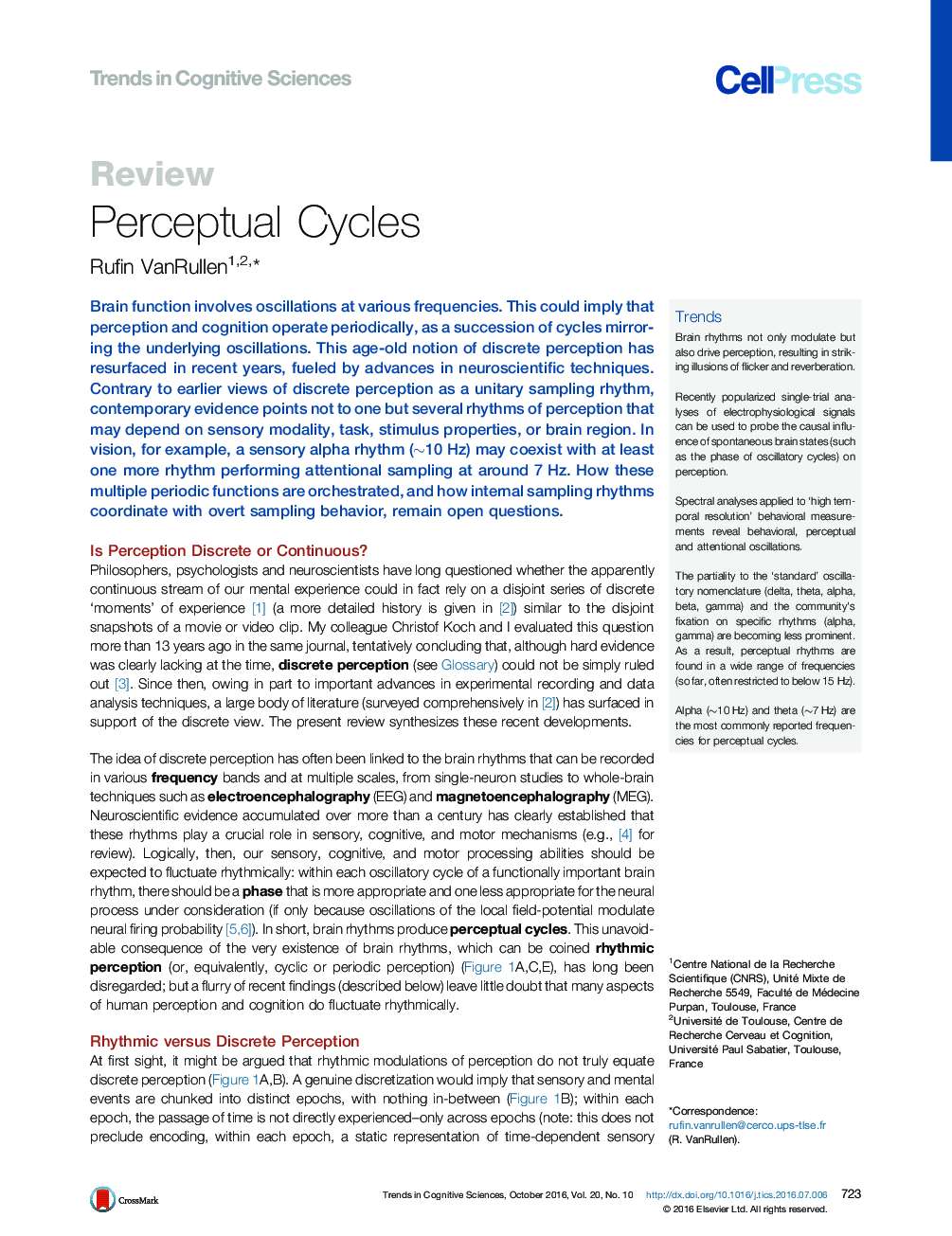| Article ID | Journal | Published Year | Pages | File Type |
|---|---|---|---|---|
| 4762237 | Trends in Cognitive Sciences | 2016 | 13 Pages |
Abstract
Brain function involves oscillations at various frequencies. This could imply that perception and cognition operate periodically, as a succession of cycles mirroring the underlying oscillations. This age-old notion of discrete perception has resurfaced in recent years, fueled by advances in neuroscientific techniques. Contrary to earlier views of discrete perception as a unitary sampling rhythm, contemporary evidence points not to one but several rhythms of perception that may depend on sensory modality, task, stimulus properties, or brain region. In vision, for example, a sensory alpha rhythm (â¼10Â Hz) may coexist with at least one more rhythm performing attentional sampling at around 7Â Hz. How these multiple periodic functions are orchestrated, and how internal sampling rhythms coordinate with overt sampling behavior, remain open questions.
Keywords
Related Topics
Life Sciences
Neuroscience
Cognitive Neuroscience
Authors
Rufin VanRullen,
